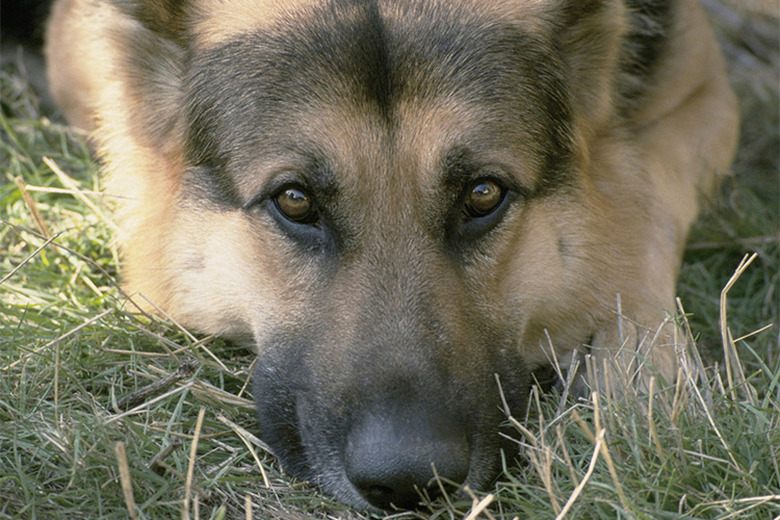Treatments For Canine Lumbosacral Stenosis
It's hard to watch your beloved dog if he's suffering from canine lumbrosacral stenosis. That's because he's in a lot of pain. He might have been born with the disease, or developed it because of spinal trauma, disc problems or any issues affecting the area where his pelvis meets his spinal column. Whether he's a candidate for medical or surgical treatment depends on how far the disease has progressed and his age.
Canine Lumbrosacral Stenosis
Also known as cauda equina syndrome, canine lumbosacral stenosis results when the nerve roots, or cauda equina, are compressed in the dog's lower back. Dogs have seven lumbar vertebrae, extending from the pelvis to the rear of the ribs. They also have vertebrae in the sacrum and tail. Nerve damage in this area results from the spinal canal's narrowing, either due to a birth deformity or degeneration as the dog ages.
Affected Breeds
Although any dog can develop canine lumbrosacral stenosis, the disease is more common in certain breeds. These include the boxer, Rottweiler, German shepherd, Great Dane, Airedale, Irish setter, Labrador and golden retriever and English springer spaniel. Males are more often affected than females. Symptoms usually appear around the age of 6 or 7.
Symptoms
It's easy to mistake early symptoms of canine lumbrosacral stenosis as arthritis development in the aging dog. The older animal might limp, have trouble getting up from a prone position or even lose bowel and bladder control. Other symptoms include tail paralysis and weakness in the hind end. It's usually obvious the dog is in pain. When younger dogs display such symptoms, suffering from the congenital form of the disease, owners and vets are more likely to realize it's due to more than ordinary arthritic changes. Your vet determines that your dog suffers from this condition by conducting magnetic resonance imaging or computed tomography scan tests.
Medical Treatment
In mildly affected dogs, your vet might prescribe analgesics and non-steroidal anti-inflammatory medications for pain relief. Your dog must rest. Keep him in a calm, quiet environment. If the stenosis progresses to the point where pain medication is inadequate, consider having surgery performed.
Surgery
Without spinal surgery, your dog's symptoms will become worse as lumbrosacral stenosis progresses. Surgery consists of a laminectomy, or creating an opening in the area of compressed nerves, at the top of the spine. During the recovery period, your dog continues to receive pain medication and activity must be kept to a minimum. Dogs should also receive physical therapy. A professional therapist can conduct the exercises, or you can learn simple exercises to do at home with your dog. While dogs might not regain normal function after surgery, they should no longer be in pain after completing recovery.
By Jane Meggitt
References
Vetstreet: Lumbosacral Stenosis in Dogs
DVM360: Degenerative Lumbosacral Stenosis in Dogs
D.C. Vets: Cauda Equina Syndrome (Degenerative Lumbosacral Stenosis)
petMD: Lumbosacral Stenosis and Cauda Equina Syndrome in Dogs
Michigan Veterinary Specialists: Cauda Equina Syndrome
About the Author
Jane Meggitt has been a writer for more than 20 years. In addition to reporting for a major newspaper chain, she has been published in "Horse News," "Suburban Classic," "Hoof Beats," "Equine Journal" and other publications. She has a Bachelor of Arts in English from New York University and an Associate of Arts from the American Academy of Dramatics Arts, New York City.
Always check with your veterinarian before changing your pet's diet, medication, or physical activity routines. This information is not a substitute for a vet's opinion.
